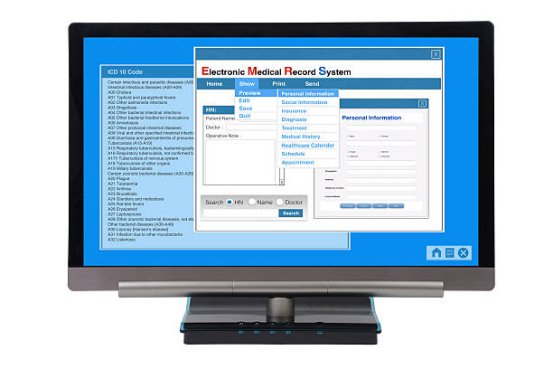How EMR Systems Are Reshaping Healthcare Management
Currently, nearly 86% of U.S. hospitals utilize electronic medical record (EMR) systems, revolutionizing how patient data is stored, accessed, and shared. This article highlights the advantages, challenges, and future innovations of EMR technology in modern healthcare.
Currently, nearly 86% of U.S. hospitals utilize electronic medical record (EMR) systems, revolutionizing how patient data is stored, accessed, and shared. This article highlights the advantages, challenges, and future innovations of EMR technology in modern healthcare.

What Are Electronic Medical Record Systems?
EMRs are digital counterparts of paper-based charts, consolidating patient histories, diagnoses, treatments, and test outcomes within a single healthcare practice. They provide structured and immediate access to critical information, enabling more accurate clinical decisions. Common features include drug interaction warnings, allergy alerts, and preventive care reminders, all designed to improve safety and clinical results.
Unlike personal health records controlled by patients, EMRs primarily serve providers. Electronic health records (EHRs), on the other hand, support secure data sharing across different facilities, making interoperability central to today’s healthcare systems.
Advantages of EMR Systems
EMRs streamline operations by reducing paperwork—sometimes by as much as 50%—and free clinicians to focus more on patient interaction. They improve record accuracy, minimize errors, and support preventive care compliance through automated reminders. Communication tools integrated within EMRs also strengthen collaboration among healthcare teams, boosting coordinated treatment efforts.
Implementation Challenges
Adopting EMRs can present hurdles, especially for smaller practices. Costs of hardware, software, and training are often high, and staff resistance can slow the transition from paper-based systems. Effective training and ongoing support are critical to overcoming these obstacles and maintaining smooth workflows.
Data protection is another pressing issue. EMR platforms must adopt strong cybersecurity measures and comply with HIPAA to safeguard patient privacy and prevent misuse of sensitive data.
Regulatory Environment
Policies such as the HITECH Act have accelerated EMR adoption by offering incentives for meaningful use, focusing on safety, efficiency, and outcomes. HIPAA, meanwhile, enforces strict patient data protection standards, ensuring secure handling of information and building trust between patients and providers.
Future Directions for EMR Systems
Technological advancements will continue to expand EMR functionality. Improved interoperability will allow seamless sharing of records among providers, enhancing care coordination. Artificial intelligence and machine learning will enable predictive analytics, helping clinicians anticipate risks and tailor treatments.
The rise of telemedicine also pushes EMRs to integrate tools for virtual visits, remote monitoring, and digital health services. Future EMRs are expected to be more efficient, user-friendly, and patient-centered, with personalized care planning and automated workflows.
Conclusion
Electronic medical record systems are transforming healthcare by improving efficiency, fostering collaboration, and enhancing patient outcomes. Though high costs, data security, and adaptation challenges remain, innovation and regulatory support continue to push EMRs toward more effective, secure, and patient-focused solutions.
